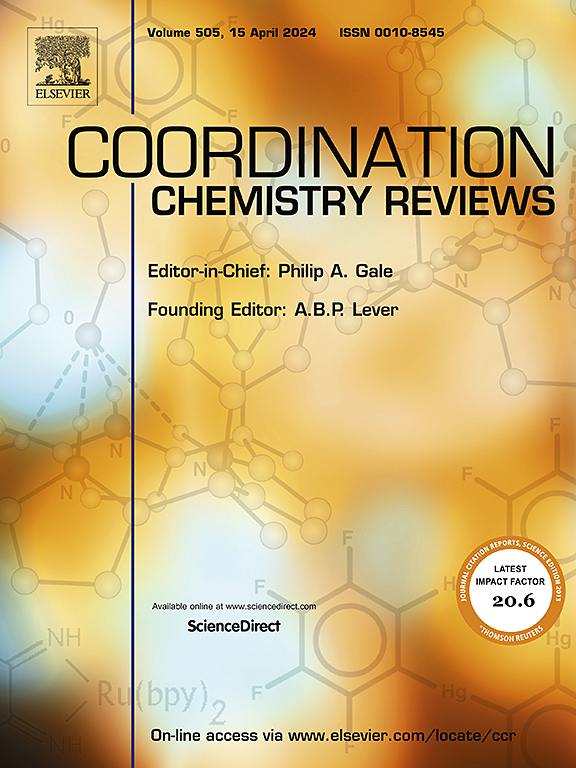Theoretical insights into performance descriptors and their impact on activity optimization strategies for cobalt-based electrocatalysts
IF 20.3
1区 化学
Q1 CHEMISTRY, INORGANIC & NUCLEAR
引用次数: 0
Abstract
The hydrogen evolution reaction (HER), oxygen evolution reaction (OER), and oxygen reduction reaction (ORR) are crucial half-reactions in energy storage and conversion systems. As ideal alternatives to precious metal catalysts, cobalt (Co)-based catalysts have attracted significant attention due to their adjustable oxidation states, multifunctionality, and structural diversity. Nevertheless, because of the complexities in composition, stoichiometry, and structures, fully understanding the microscopic origin of relevant reaction mechanisms and the inherent structural and performance relationships remains a great challenge. Therefore, utilizing the theoretical descriptors to distinguish and reveal the factors that limit the electrocatalytic activities of the Co-based electrocatalysts is thus of great importance, which is very crucial for appropriate adjustment of the synthetic strategies, the structure/composition optimizations, and finally the enhancement of the electrocatalytic performance. In this review, the computational hydrogen electrode and HER, OER, and ORR mechanisms are first introduced. Then, the performance descriptors related to the conductivity, reactivity, and stability were derived and discussed in-depth from density functional theory (DFT) calculations. Inspired by these descriptors, various strategies to comprehensively optimize the structures and electronic properties of the Co-based catalysts are summarized. Finally, current status, challenges, and future prospects of Co-based catalysts in practical Zn-air batteries (ZABs) and water splitting applications were reviewed.求助全文
约1分钟内获得全文
求助全文
来源期刊

Coordination Chemistry Reviews
化学-无机化学与核化学
CiteScore
34.30
自引率
5.30%
发文量
457
审稿时长
54 days
期刊介绍:
Coordination Chemistry Reviews offers rapid publication of review articles on current and significant topics in coordination chemistry, encompassing organometallic, supramolecular, theoretical, and bioinorganic chemistry. It also covers catalysis, materials chemistry, and metal-organic frameworks from a coordination chemistry perspective. Reviews summarize recent developments or discuss specific techniques, welcoming contributions from both established and emerging researchers.
The journal releases special issues on timely subjects, including those featuring contributions from specific regions or conferences. Occasional full-length book articles are also featured. Additionally, special volumes cover annual reviews of main group chemistry, transition metal group chemistry, and organometallic chemistry. These comprehensive reviews are vital resources for those engaged in coordination chemistry, further establishing Coordination Chemistry Reviews as a hub for insightful surveys in inorganic and physical inorganic chemistry.
 求助内容:
求助内容: 应助结果提醒方式:
应助结果提醒方式:


